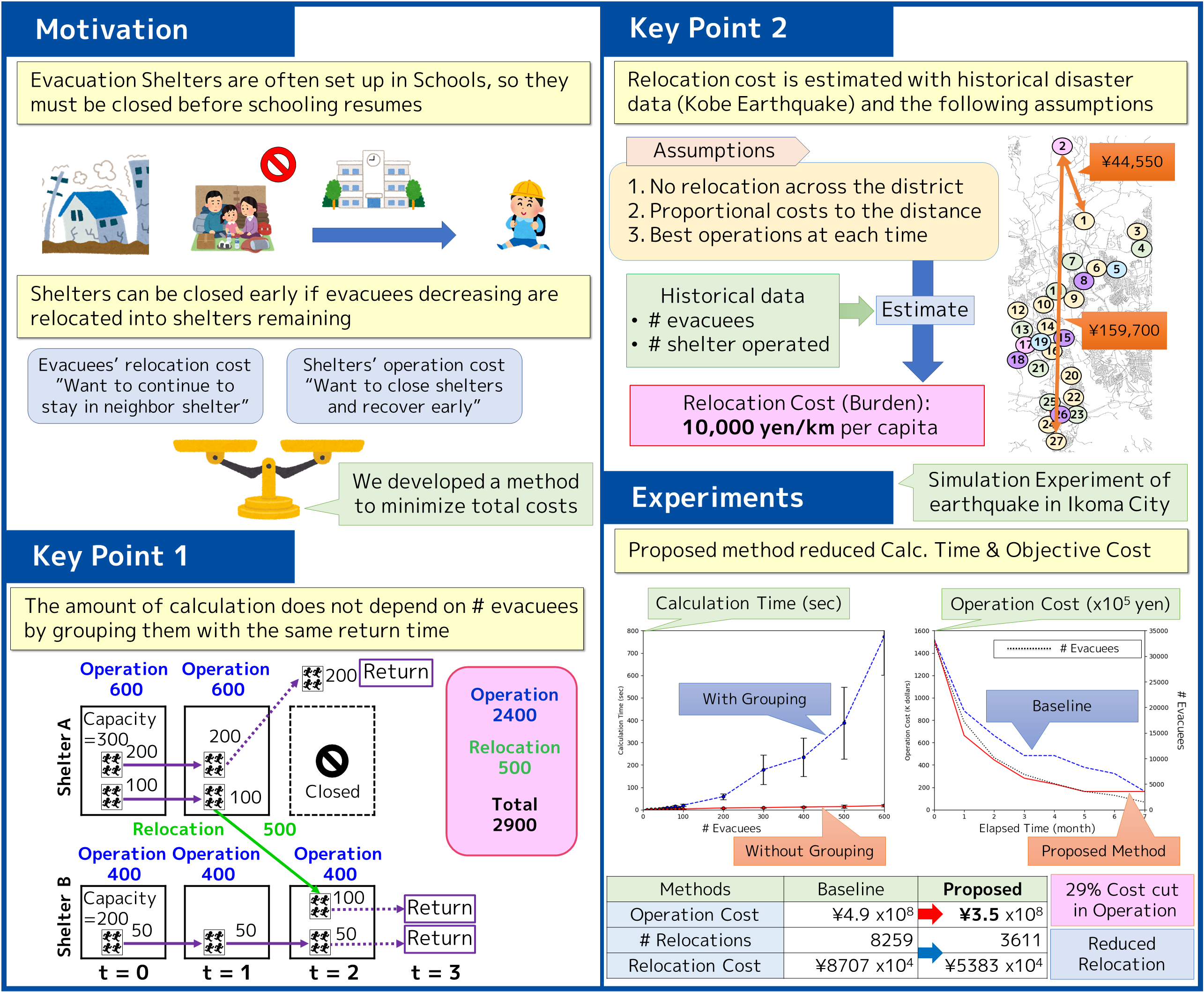| 06 |
Rapid disaster recovery through efficient shelter managementOptimal shelter operation with sequential return of evacuees |
|---|
Shelters are provided to evacuees whose homes have been destroyed in a disaster. In a recovery phase, efficient operation of the shelters is necessary to restore the facilities to their original use. In this study, we proposed a method to minimize the total cost of operating shelters and the burden of relocating evacuees between shelters by utilizing the return home time of evacuees. Our method allows the shelters to be used for their intended purpose as soon as possible after a disaster, thus enabling rapid recovery. Even when the number of evacuees is large, we introduced a variable that represents the number of evacuees grouped by the return home time so that the calculation can be performed efficiently. We also proposed a method to estimate the burden of relocating evacuees between evacuation shelters, thus achieving a balance between the operation costs of shelters and the relocation costs of evacuees. When disaster simulations are used to select response measures, it is not efficient to run through all the patterns of response measures exhaustively. By developing our method further, we aim to establish a simulation infrastructure that solves not only disasters but also various social issues through simulation.

[1] H. Shimizu, H. Suwa, T. Iwata, A. Fujino, H. Sawada, K. Yasumoto, “Evacuation shelter scheduling problem,” in Proc. the 55th Hawaii International Conference on System Sciences (HICSS 2022), pp. 5705–5714, 2022.
Hitoshi Shimizu / Learning and Intelligent Systems Research Group, Innovative Communication Laboratory
Email: cs-openhouse-ml@hco.ntt.co.jp



